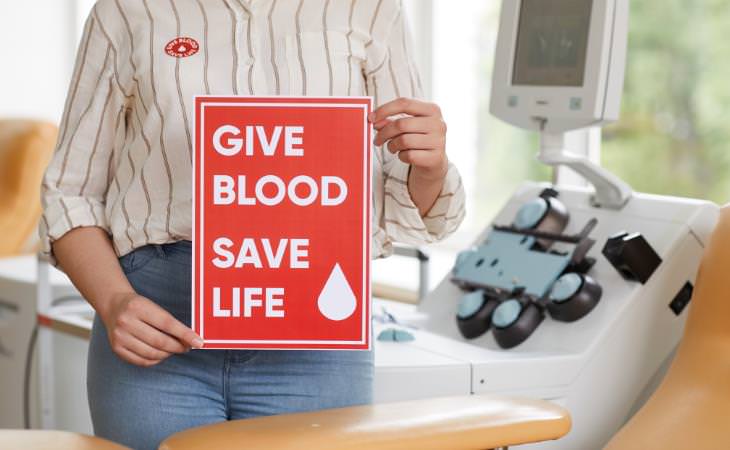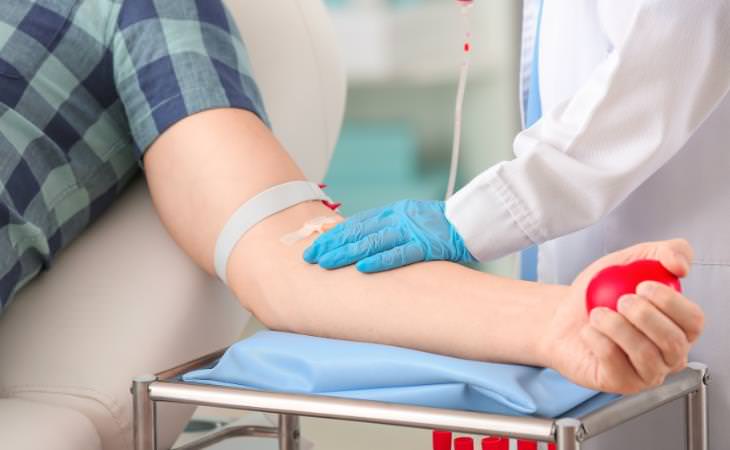Don't Let These Blood Donation Myths Deter You From Giving
Donating blood saves lives – we’ve all
heard this before. But let’s check some facts that back this claim.
According to the American Red Cross, one blood donation can save as many
as three lives, and someone in the U.S. requires a blood transfusion
every two seconds. Every year, millions of lives are saved because of
blood donations and blood products. Donating blood can help people
injured in accidents, as well as those undergoing cancer treatment and
battling blood diseases.
The World Health Organization (WHO) further explains:

“A decision to donate your blood can save a life, or even several if
your blood is separated into its components — red cells, platelets, and
plasma — which can be used individually for patients with specific
conditions.”
Unfortunately, while donating blood provides a lifesaving gift, it can
be an intimidating task for some people. Misunderstandings or
misconceptions about the process make people more reluctant. So, today,
we will bust some common myths about blood donation to ease people’s
minds about donating.
Myth 1: If I donate blood, I won’t have enough left in my own body


Blood donation is safe, and any healthy
individual who donates will remain healthy afterward. Doctors do
recommend that people rest for a day and drink fluids after donating.
After about 48 hours, your body will replace the lost blood volume. In
about four to eight weeks, your body will completely replace the red
blood cells you donated.
Some people might experience adverse effects such as weakness,
dizziness, or lightheadedness after donating. But doctors say these
symptoms go away on their own. Just make sure to drink some fluids and
have a light snack afterward.
Myth 2: Seniors can’t donate blood
This isn’t true. The American Red Cross
says that people who are older than 16 years and weigh more than 110
pounds (50 kilograms) are eligible to give blood. They also state that
there’s no upper age limit for blood donation as long as someone is
healthy and has no restrictions or limitations to their activities.
These rules do differ in some countries. In the United Kingdom, for
instance, donors must be aged 17–66 years.
According to WHO, some countries allow regular donors over the age of 65
to give blood at the discretion of a responsible physician.
Myth 3: I take medication, so I can’t donate blood
In almost all cases, medications won’t disqualify you from donating
blood. According to the American Red Cross, a donor’s eligibility will
be based on the reason that the medication has been prescribed. If you
are healthy and your condition is under control, then blood donation is
likely to be permitted.
Herbal remedies, nutritional supplements, and over-the-counter oral
homeopathic medicines are permitted too. Read the complete breakdown of
medications that affect donation eligibility on the American Red Cross
website.
Myth 4: I might contract dangerous infections if I give blood
Doctors say that there is no risk of
catching an infection when donating blood. A new sterile needle is used
with each new blood donation and immediately discarded. Therefore,
there’s almost no chance of catching a bloodborne infection from
donating blood if the hospital you are donating blood at follows all the
rules.
Myth 5: You can’t donate if you’ve had COVID-19
Just because you’ve had COVID-19 in the
past doesn’t mean that you won’t be able to donate blood in the future.
Health experts say that donors have to be free of any symptoms for at
least two weeks. If you're currently recovering from COVID-19 or are
displaying COVID-like symptoms, don’t attempt to donate blood. You
should be resting and isolating.
Myth 6: You can only give blood once each year
donThis is false. As we mentioned earlier, blood cells take up to eight
weeks to be replenished. After that, it’s safe to donate blood again.
The American Red Cross says that you can donate whole blood every 56
days up to 6 times a year.
Myth 7: Blood donation is time-consuming
According to the American Red Cross, the
donation of a pint of whole blood takes from 8 to 10 minutes.
Registration and processing times vary, but they typically take
somewhere between 30 and 60 minutes. After registration, you’re usually
required to answer some questions about your health and travel history.
This is followed by a brief physical examination to determine if you’re
eligible to donate blood. That’s it.
So if you’re planning to donate blood, don’t be hesitant thinking it
will take a long time. It won’t.
Myth 8: You cannot donate if you have high blood pressure or high
cholesterol
Having high blood cholesterol levels won’t
disqualify you from donating blood as long as you're otherwise healthy.
Also, you can donate blood if your blood pressure is below 180 systolic
(first number) and below 100 diastolic (second number), says the
American Red Cross. Even medications for high blood pressure won’t
disqualify you from donating. The Red Cross provides a detailed list of
the eligibility criteria for donating blood.
Myth 9: Enough people donate blood. There’s no need for me to do so
Sadly, this isn’t true. Blood has a limited
shelf life and can’t be manufactured outside of the human body. Donated
red blood cells have a shelf life of up to 42 days, while donated
platelets must be used within 5 days. Therefore, the supply must
constantly be replenished, and there is always a need for more blood
donors.
Statistics show that only about 37 percent of the U.S. population is
eligible to donate blood - less than 10 percent of these potential
donors give blood regularly. Blood banks can, at times, have a critical
shortage of some blood types. Earlier this year, the United States had a
national blood shortage during the COVID-19 pandemic. So if you’re
eligible, it’s always a good idea to roll up your sleeves and spare an
hour to give blood.